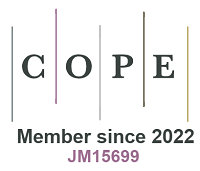Fine-tuning different structures of photosensitized Cu(I)-MOFs with tetraarylpyrrolo[3,2-b]pyrrole units for high-efficiency solar hydrogen generation
Abstract
Metal-organic frameworks (MOFs) are promising materials for photocatalytic hydrogen production, but their development is hampered by limited light absorption, sluggish charge transfer, and rapid carrier recombination. Here, we report a triple optimization strategy integrating light harvesting enhancement, targeted electronic transfer, and charge separation to systematically improve the photocatalytic performance of MOFs. Two structurally different Cu(I)-based MOFs are synthesized via the tetraarylpyrrolo[3,2-b]pyrroles (TPP)-based ligand (H2TPP): 2D layered Cu-TPP-2D and 2D woven Cu-TPP-1D by chains of complex. Based on the conjugated nature of the ligands, both MOFs exhibit broad visible light absorption and strong targeted charge transfer due to their donor-acceptor configurations. It is shown that Cu-TPP-1D achieved a remarkable HER rate of 3,135.0 μmol g-1 h-1 under visible light (λ ≥ 420 nm), which is 1.4 times higher than that of Cu-TPP-2D. Importantly, the unique 2D woven structure of Cu-TPP-1D not only establishes abundant electron transfer channels and enhances the electrical conductivity, but also strengthens the structure, enabling its performance to remain at 95.0% after 5 reaction rounds. Theoretical calculations showed that the charge transfer between ligands in Cu-TPP-1D further enhanced the photogenerated electron-hole separation efficiency, resulting in better photocatalytic performance. This work provides a general design principle for MOF photocatalysts and emphasizes the critical role of woven structure engineering in solar energy conversion.
Keywords
Donor-acceptor configuration, 2D woven structure, photocatalysis, hydrogen evolution reaction
Cite This Article
Xue J, Yang GP, Wang YY. Fine-tuning different structures of photosensitized Cu(I)-MOFs with tetraarylpyrrolo[3,2-b]pyrrole units for high-efficiency solar hydrogen generation. Chem Synth 2025;5:[Accept]. http://dx.doi.org/10.20517/cs.2025.63












